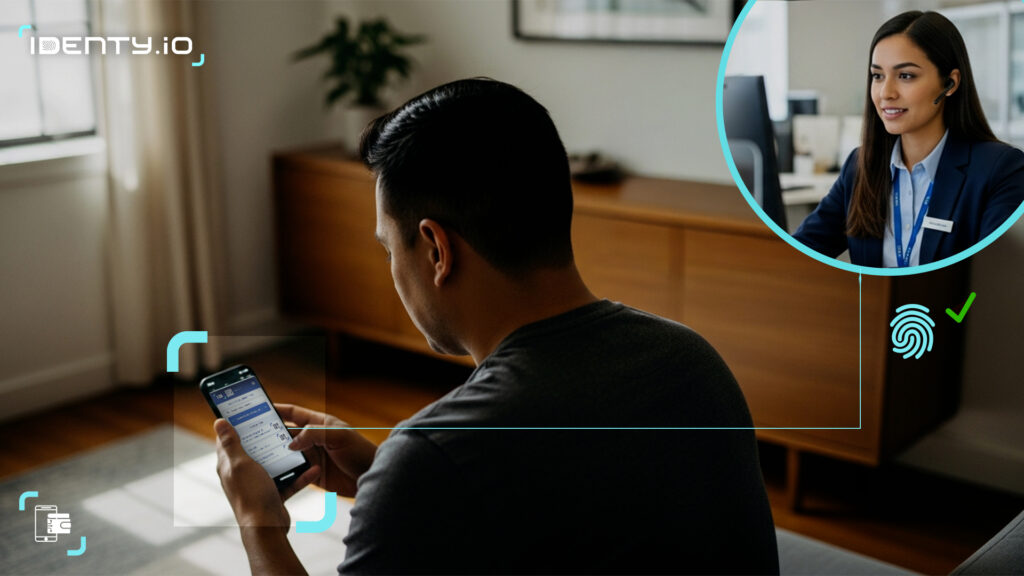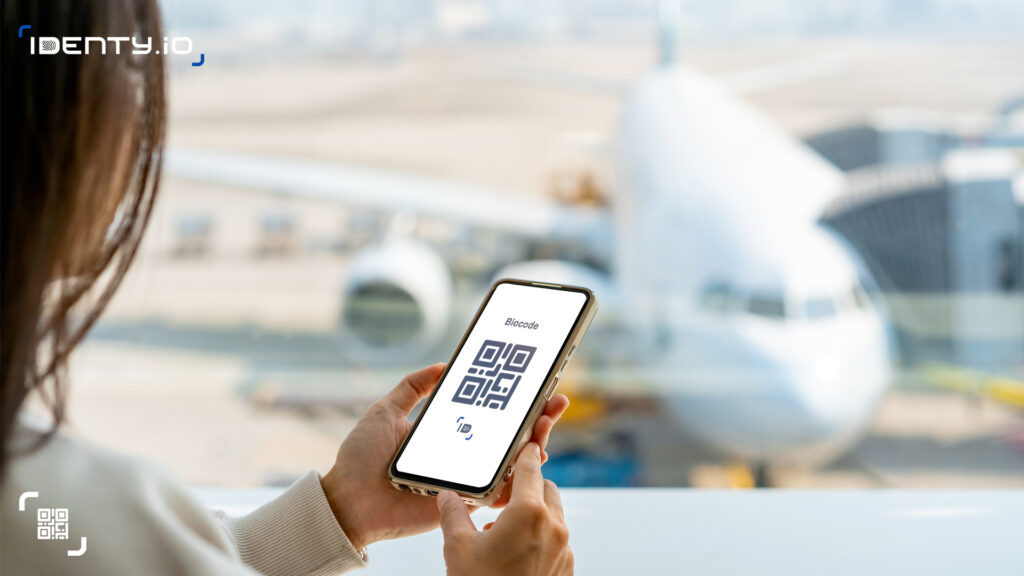Table of Contents
ToggleIdentity fraud and theft are escalating global concerns. Although technological evolution has facilitated the work of cybercriminals, one of the main entry vectors that make identity theft possible is the users’ lack of vigilance in handling personal information, their carelessness or the transfer of personal data to third parties without applying the necessary precautions.
Users have already adopted virtual banking cards for e-commerce transactions, enabling precise control over shared information. However, identity verification has remained fragmented—until now. Digital wallets leverage verifiable credentials (VCs) and decentralized identity frameworks to ensure that users can securely prove their identity without exposing unnecessary personal data.
According to the World Bank, it is estimated that around 750 million people around the world, mainly in developing countries, still do not have an official document certifying their identity. Lack of birth registration, logistical and administrative barriers to obtaining this documentation – one in three people in this situation recognize the difficulty of the procedures as the main cause – or economic issues such as poverty and social marginalization are just some of the reasons for this.
The rise of digital identity as a transformative technology
If over the last few years there has been one technology that has established itself as a democratizing factor, it is mobile telephony. Currently, organizations such as GSMA Intelligence estimate that there are around 6 billion unique cell phone users worldwide with around 8.65 billion active lines. According to Telefonica (a tier-1 telecommunication provider), 82% of all devices used were Smartphones, which implies the possibility of being able to use additional functions such as connecting to the Internet or using cameras to take photographs or videos.
This extension is facilitating, and also democratizing, the possibility of obtaining a digital identity -and carrying it with you at all times on your cell phone, without the need for Internet coverage- without having to travel hundreds of kilometers to a certifying entity, which opens the door to a gradual reduction in the number of people who do not have this documentation.
However, and from a purely legislative point of view, the possibility of dispensing with physical documentation and relying solely on digital is still taking its first steps. In Europe, for example, the European Digital Identity Framework (eIDAS 2.0) was approved in May 2024, requiring each member state to offer at least one digital identity wallet by 2026, ensuring interoperability and access to public and private services across the EU.
In the U.S., meanwhile, developments in digital identity have so far depended on state initiative. In California, for example, it is possible to store driver’s licenses in the digital wallets of the two main cell phone operating systems, in a program already enjoyed by more than 500,000 people. At the federal level, the Improving Digital Identity Act aims to standardize verification mechanisms, although it is still in the Senate debate phase.
Brazil began developing its Carteira de Identidade Nacional (CIN) in 2022 to reduce fraud and improve interoperability, and since then there has been significant progress, such that as of January 2024, 24 states already issue the CIN, with more than 3 million active users. Mexico, for its part, approved in 2020 the General Law on Population, Human Mobility and Interculturality, which establishes a national digital identity system, including the Single Digital Identity Card (CUID), which incorporates, as the main advance, the incorporation of biometric data.
Main advantages in terms of convenience, security and fraud prevention
In addition to the inclusion and democratization of access to a digital identity, the so-called “Digital Wallets” offer multiple benefits and advantages, not only for the users who use them, but also for the public and private entities that take benefits from them. The reduction of fraud is one of the most important ones, since personal information is stored in the user’s cell phone, and not in the cloud, under strict encryption measures that require biometric authentication to grant access. Users can also control at all times what information they want to share, ensuring their privacy and restricting access to potentially critical data by third parties.
We are, at Identy.io, one of the pioneers in the development of these digital wallets, which has allowed us to become a leading international company in touchless biometric identification and digital credential management solutions. Conceived mainly as support tools for the financial sector, e-commerce and government entities, these solutions have three main features that make them a perfect ally against fraud and identity theft.
- Credential issuance, which offers institutions such as banks the possibility of providing their customers with a digital identity that complies with various protocols and standards to ensure that these credentials are secure and reliable.
- Credential management, which provides end users with a platform from which to receive, store and manage their digital credentials. From there they have full control over their data, and can access it whenever they need it.
- Credential verification, which enables third parties to validate users’ credentials, ensuring that they are who they claim to be with a high level of security and confidence in their transactions.
How Identy.io Wallet works?
Once the users have downloaded the Identy.io Wallet app on their cell phone, they can request verifiable credentials from trusted entities:
- Government agencies (e.g., national ID, driver’s license)
- Financial institutions (e.g., bank account verification, KYC compliance)
- Educational institutions (e.g., diplomas, certifications)
The issuing entities of what is known as Verifiable Credential (VC) check the user’s identity and then issue a cryptographically signed digital document ensuring authenticity, proving that the user is who he/she claims to be.
Once the user has this digital credential, it can be stored in the Identy.io Wallet with the assurance that it will be encrypted on the device itself, and can only be accessed once the user’s identity has been verified through biometrics, i.e. fingerprint recognition with liveness. Users can then manage, and present these credentials without an internet connection, making identity verification instant and hassle-free.
One standout feature is the biometric verification system integrated within the wallet, which ensures that only the rightful owner can access and use their stored credentials. This contrasts sharply with centralized identity verification systems, where user data is stored in large databases vulnerable to breaches.
What can the user do with these credentials stored on their device?
One of the most common uses of Identy.io Wallet is the possibility to perform pre-check at airports, and identity verification both during pre-check, boarding and on arrival. In these cases, the user can access his/her personal information stored securely on his device and, without the need for an Internet connection, present the personal credentials after scanning a QR code or via NFC technology, and save time and hassle by having an intuitive and easy-to-use interface.
The user can also store in this digital wallet his or her credentials for access to corporate or government buildings. As in the previous case, the user can share only the necessary and essential personal information, and scan or present their phone to NFC readers to verify their identity and unlock doors or access. In cases where identity verification is required to use critical services (e.g. telecommunications or IT management), this solution allows the user to validate that they have the necessary credentials from their own device, and after verifying their identity.
Digital wallets have many more possibilities of use, from the purchase and storage of tickets for concerts or sporting events, to access to movie theaters or events, through age verification to buy alcoholic beverages or services reserved for adults. All this from the user’s device, without friction and in a convenient, fast way and without the need to access the Internet.
As with the rest of Identy.io’s solutions, the user does not need to have a last generation high range smartphone or a powerful Internet access tariff, since, once the onboarding process is completed to obtain the digital credential, the entire process, from encrypted storage to the retrieval of the credential for presentation when required, is carried out on the phone itself.
Why Identy.io Wallet Stands Out
Identy.io Wallet differentiates itself by offering a unique combination of decentralized identity, biometric security, and offline usability. Unlike other solutions that rely on cloud-based verification, Identy.io ensures that credentials remain encrypted within the user’s device, significantly enhancing privacy.
Moreover, compliance with emerging global standards (such as OpenID for Verifiable Credentials and W3C VC specifications) makes it future-proof and adaptable across multiple industries.
As digital identity wallets continue to redefine the identity verification landscape, solutions like Identy.io Wallet are at the forefront, enabling secure, user-controlled, and frictionless digital transactions. Whether in finance, government, or everyday services, the shift towards trusted digital identity is not just an innovation—it’s a necessity.





